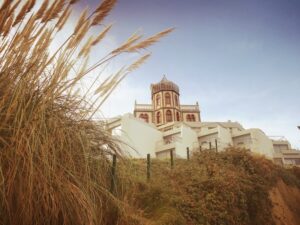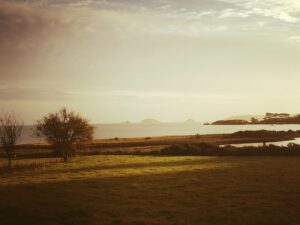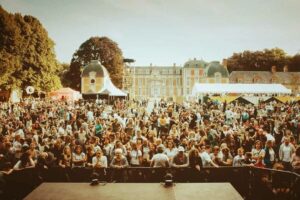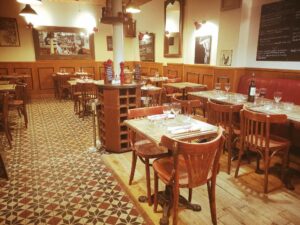The Aude area is applying to UNESCO
13 min read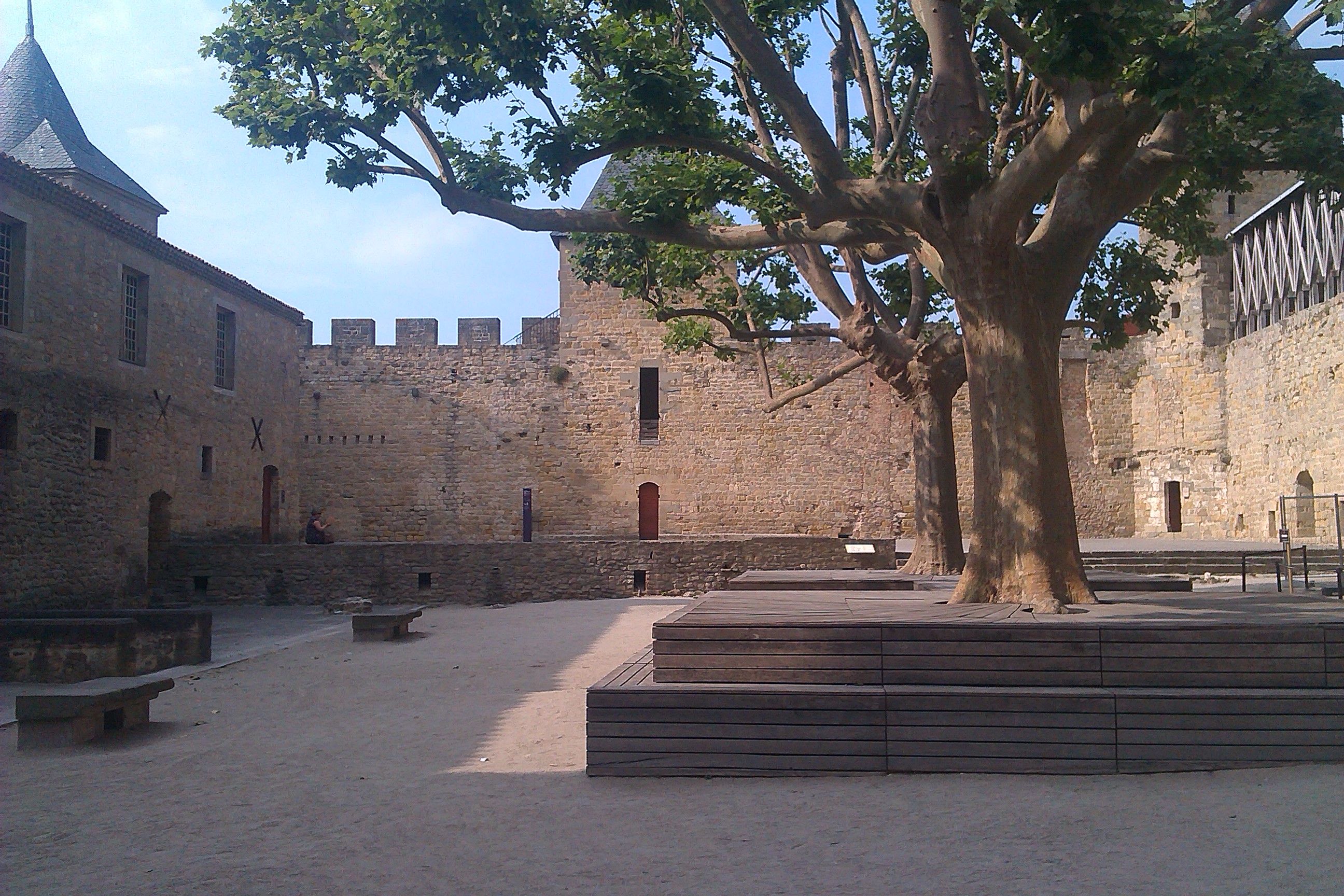
On lands full of vineyards and the Mediterranean sun, the Aude has major historical assets directly linked to the fate of an entire people, the Cathars, who wanted to return to the original poverty and purity of the Church. Their places of life and defense, formerly called castrums, were confiscated, destroyed and rebuilt following the crusades ordered by the King of France, to make them royal fortresses in order to defend the border against the Kingdom of Aragon. It is these heritage and architectural treasures that are aimed at international recognition through the joint application, under the auspices of the Departmental Council of Aude, of eight of these sentinel castles, with a view to their inscription on the UNESCO World Heritage List. A project poetically called the “Citadelles du Vertige”.
https://www.instagram.com/p/BabFmf7Ftro/?taken-by=francevisiting
The Cathar fortifications, structures all in height, recovered by the Kingdom of France
Victims of their different conception of Catholicism, these “heretics” as the Pope called it, have staked their area of occupation of many castles perched on the flanks of “pogs” (mountains in Occitan).
This prospect of defense unfortunately did not preserve them from the multiple attacks of the two crusades ordered by the Holy See and executed by the king of France Philippe Auguste, at the beginning of the XIIIth century, ordering the abjuration of their faith or the stake.
There were seats including Montségur in 1244 and that of Quéribus in 1255 which allowed to define the outlines of the border established in 1258 by the Treaty of Corbeil. From that moment on, fortifications were reinforced with a view to attacking Barcelona and Girona.
All these Cathar cities fell under the royal yoke which undertook their destruction and the construction of royal fortresses, in their place and place, and suddenly wrongly named Cathar castles, to ensure a defense of the Kingdom of France against the threat of the Kingdom of France. Aragon.
The most beautiful example is undoubtedly Carcassonne, and its immense fortifications almost faithful to their origins after certainly several renovations of which the notable phase operated by Viollet-Le-Duc in the 19th century.
Other high-perched citadels did not suffer the same fate and were subject to weather damage. Nevertheless, they are still unavoidable places dedicated to the visit.
Another step in the recognition of this priceless international heritage
Starting from this recognition of invaluable heritage, the Departmental Council of Aude accompanied by a Committee of Experts undertook to carry candidates a set of 8 of these royal fortresses, located on the Aude, including Carcassonne, and one in Ariège, in the UNESCO World Heritage Register as a “serial property”, justifying the unique aspect to the world of this first series construction inspired by the model of fortification instigated by Philippe Auguste.
A global comparative analysis should be conducted to show that there is no other centrally managed serial property on the World Heritage List.
This follows the first nominal appointment of Carcassonne to this prestigious register in 1997, which completes the latter.
Initiated in September 2010, this UNESCO project of candidature of Carcassonne and its “five sons” (Aguilar, Peyrepertuse, Puilaurens, Quéribus, Terms), nicknames attributed to five castles around, added those of Montségur and Lastours, and led by Kathy Martinez, took a further step in April 2017 by going over the indicative list of the body that validated the outstanding universal value, and now in preparation for the management plan that stipulates the protection and conservation of the monument and the cohesion of the surrounding buffer zone, based on the criteria for awarding the label, which groups together ten criteria for which the Carcassonne group’s candidacy already meets two, while it suffices for one to be registered. on the World Heritage List, this justification is the subject of a very complete file and must be accompanied by a management plan.
Knowing that two candidatures can be proposed to UNESCO per year by the French State, but from 2020, only one will be authorized. Then, the application is subject to a technical evaluation, for cultural property, by an advisory organization, ICOMOS (International Council on Monuments and Sites). And finally, after expertise, and at the earliest 18 months after the application, the UNESCO World Heritage Committee makes its decision at its annual session. It can accept or refuse inscription in the World Heritage Register, but also postpone its decision by asking for further information.
A project of candidature ringing the impetus of a whole territory
An approach, the result of a consortium of 13 academics, going hand in hand with the Aude 2030 departmental plan, aimed at planning scaled-up investments for heritage development, already well highlighted through the “country program”.
cathare “, via creation of the Pays Cathare® brand, by the department of Aude, then taking part in an original local development approach, in support of economic development and
structuring in the territories of the agri-food and tourism sectors in the area.
In parallel, for 25 years, castles and abbeys have benefited from considerable efforts of conservation and development, through more than 33 million euros of investments in renovation.
The UNESCO World Heritage inscription would thus offer a “universal” recognition and a tremendous lever for tourism and economic development in the region. It usually results in an increase of 20 to 30% in tourist numbers. For example, Albi Cathedral, ranked in 2010, has grown from 580,000 to 750,000 visitors in five years.
Fortresses with mostly military use
From the middle of the 13th century, these seigniorial castles passed under the royal yoke and undertook major works in order to adapt these fortresses to the royal military ambitions, with the recourse of a large qualified local workforce. It was not uncommon to have construction sites involving fifty craftsmen and twenty stonemasons because the cut stone made it possible to save the binder whose lime which slowed down a rapid construction since it takes time to to dry.
The record presented here indicates for the most part sharing a common history, dating back to the 13th century and most often housing heretics.
An architectural reason also common philippian, under the leadership of Philippe Auguste and round towers, preventing blind spots, and its barbacans adapted to local structures including but developed from Saint Louis and Vauban, passing from a passive defense to an active defense.
The treaty of Meaux-Paris in 1229, installs Carcassonne like royal seneschal, at the head of this line of defense of the territory vis-a-vis Aragon. The arsenal of Carcassonne will supply, in ammunition and food, these different castles, which were classified rather early historical monuments in the 1900s which Montségur led the way.
https://www.instagram.com/p/BaeErXLFn2J/?taken-by=francevisiting
Carcassonne, spearhead of the UNESCO candidacy
This second UNESCO label would thus allow these sites to be recognized as World Heritage sites, with the Cité de Carcassonne considered as the key to Languedoc.
A fortification consisting of three concentric enclosures, or “nesting dolls” made of works from the late 13th and early 14th centuries, built on the famous Philippine model including the Narbonnaise Tower, participating in the proclamation of a new authority.
It is an imported architecture supplanting the vernacular architecture since implicating engineers of the King, including a reinforcement of the ramparts of a length of nearly a kilometer, a rather homogeneous aspect, protecting nearly 4 hectares Intramural.
Viollet-Le-Duc operated a renovation faithful to the origins, adding slates on the various turrets having seen their roof disappear. It was honored during the first UNESCO inscription of the Cité in 1997 as a “fortified historic city” and paid tribute to the innovation of the construction of the citadel which enjoyed an active defensive system.
This project of second inscription aims to demonstrate that behind this network of castles established by the royal power reasons a certain logic between them, with an architecture mostly common, defined as “Philippian” with a strengthening of the walls, a voluntary removal of homes as well as a reduced presence of garrisons on the spot to about twenty heads with their relatives. These “sentinel castles” showed their effectiveness since they remained for four centuries until the frontier was moved further south by the Treaty of the Pyrenees.
Gothic at every turn, emblematic of the Capetian era bringing its share of technical prowess thanks to cross warheads but also aesthetic since embellishing the buildings by the majestuousness of these monumental vaults reinforcing these citadels of several levels.
Once integrated into the Kingdom of France in 1226, the City of Carcassonne becomes a real stronghold, under the reigns of Philip III the Bold and Philip IV the Bel, ripe two enclosures separated by lists, having the purpose of slowing enemy and operate his active defense technique.


The walls, made of sandstone, sensitive to humidity, extracted on site, were renovated by sandstone coming from newly opened quarries (Photo credits: Alex Plato).
An edification of the lower town, or bastide, in 1248 with perpendicular streets as in Manhattan, where the royal power uses this opportunity to transfer the homes of the strong city to be converted into a fortress.


We dedicate this site to the illustration of Capetian architecture (Photo credits: Alex Plato).
The Cité Comtale retains vestiges of all eras, whose styles are intertwined, like the ancient walls made of Roman concrete (a mixture of lime and mortar), which can be covered with Burgundy tiles, which are less expensive to use. purchase and reflection of the burying campaign undertaken between the 1950s and 1980s.


In addition, archaeological excavations initiated in the 1980s revealing these vestiges of mosaics of the 1st century composed of red marble of Languedoc (Photo credits: Alex Plato).
Lastours and its four independent towers


Ideally located on a site opportunistically, 300 meters above sea level, at the top of a crest of a rock spur 600 meters long and 250 meters wide, the four castles of Lastours (Cabaret, Surdespine, Quertinheux and the Regine Tower), with circular towers surrounded by a large curtain wall, were held with four squires in their breasts, which shared a small space and supported each other (Photo credits: Alex Plato).
Many principalities, almost independent, punctuate this territory in the 12th with two large families who share it, the counts of Barcelona and those of Toulouse who play alliances. “They shared the outlet of the Rhone Valley”, according to Guy Maso, specialist lecturer guide of the medieval era and also entrepreneur in the renovation of classified sites.
40 years of excavations have revealed large houses organized around the lords of Cabaret, who base their defense on local solidarity. In contrast to other isolated castles like Quéribus. The organization of the terraced slopes testify to the ancient agricultural activity, around them was organized a village castral with different suburbs, between the middle of the eleventh century and the first half of the twelfth century, below the primitive castle of Cabaret. It is on this subject that Marie-Élise Gardel has been working on the archaeological aspect since 1987.
Cabaret being an important center of religious activity of the “fellows”, sheltering many “Cathar houses” some of which held by “perfect” practicing including textile crafts.
Cabaret is the victim of the repeated attacks of the Crusaders, headed by Simon de Montfort in 1210 and 1211, before this fief was recovered by the lords of Cabaret in 1220, hosting many Cathar refugees, the site acting as bridgehead. the Languedoc resistance to the crusade of the King of France.
In 1230, the perched village stops because completely destroyed by the villagers who surrendered, fled without having time to take their household items and move lower to River, leaving the sentinel castles, little inclined to s’ clutter of a nearby village.
Finally, in 1238, is ordered the transformation of the castles into royal fortresses, currently visitable.


In a country under Capetian rule, the site of Lastours is surrounded by iron mines and was endowed with an iron defense since it was attacked three times but never failed (Photo credits: Alex Plato).


The presence of the powder magazine marks the extent of the armory and ammunition stock available to soldiers. Moreover, we know that it has been occupied since the dawn of time as evidenced by the Princess Colliers, present around 1500 years BC around this cave (Photo credits: Alex Plato).
https://www.instagram.com/p/Bad-9mqFumb/?taken-by=francevisiting


The castle of Quéribus, which was still isolated and enjoys its sight to put a garrison and a sentry watch, is located on roads where the lords were enriched by the levy of a tax on trade routes ( Photo credits: Alex Plato).
It contains Carolingian traces because of the strategic aspect of the passes.
In 1232, the Inquisition was launched against the Cathars in Toulouse to escape the arbitrariness of the royal troops against the Occitan. The mission was entrusted to the Dominicans, the first police of modern fashion, the inquisitors will be the first to work in writing.


Featuring an original five-storey size, showing the over-sizing of these garrison bases, this sentry-castle offered its occupants all the modern comforts and conditions to best defend themselves, including its huge, well-ventilated powder magazine and the panorama. giving visibility to Mount Canigou (Photo credits: Alex Plato).


In 1280, a great royal expedition was held by Philippe Le Hardy, Girona with 50000 soldiers including these castles perched on premontals serving as a base (Photo credits: Alex Plato).
The ogival crosses, despite their Gothic aesthetic appearance, were purely functional and had the sole purpose of structuring the ceiling.
https://www.instagram.com/p/BaeJG3rFIAA/?taken-by=francevisiting
Peyrepertuse


 A chapel of Romanesque style, from the 12th century, was maintained during the takeover of the place by the royal power (Photo credits: Alex Plato).
A chapel of Romanesque style, from the 12th century, was maintained during the takeover of the place by the royal power (Photo credits: Alex Plato).
The lords surrender without combat in 1240 and it becomes then royal fortress, supplanting the original walls with a squire not necessarily, from the nobility, the controllers.
There is a use of the least element of optimal relief, especially houses built against the rock.
Massive dogs were used to ensure the safety of the site including mastiffs (Photo credits: Alex Plato).
The site includes a large storage capacity, mainly from Carcassonne including masses of Carrier, armament, iron hats, crossbows including a large stock of tiles.


UA site on several levels showing the size of the occupied area, having nothing to envy in Carcassonne and seated the royal power that builds the site thanks to ephemeral quarries extracted from the rock by manpower most often local (Photo credits: Alex Plato).
https://www.instagram.com/p/Bae4tkTFNm8/?taken-by=francevisiting
Montségur, place of Cathar memory

At an altitude of 1207 meters, Montségur impresses and has shown the Cathars to resist the attacks of the royal armies (Photo credits: Alexandre Plateaux).
Montségur is known for being a hotspot for Catharism, being its capital from 1204 to 1244.
Nevertheless, the first human traces come from more than 4000 years.
In the year 1204, Montségur was rebuilt and we do not find what the Cathars have found. The place will become a castrum, walled city, refuge on a long mountain that stretches east 800 meters long and 400 meters to the Roc de la Tour. From this fortified village, there is nothing left since the Crusaders have shaved everything and rebuilt a new fortification.
After a long siege of 11 months, in 1243, well documented thanks to many excavations results. After several months of procrastination, a commando of 15 mountaineers, Gascon, were recruited to climb the Roc de la Tour allowing the installation of catapults of the Crusaders involving terrible fights and many shots.

Stele of tribute to the Cathar martyrs (Photo credits: Alex Plato)
Following the truce, there will be no Cathar Abjure and they were joined at the stake by Catholics who converted by solidarity, after a baptism baptism said consolamentum.
With the end of Montségur, the “synagogue of Satan”, it was the end of the cradle of Catharism.
Guy de Levis was appointed lord of Montsegur without having gone there. It was his descendant Guy 3 who devoted himself to the reconstruction of the site, helped by the King of Aragon.
Abandoned in the 17th century and put back in the saddle by a Protestant pastor, the place now welcomes nearly 56,000 visitors a year.
The citadel had an atrium and roofs with canals tiles thrown during the excavations of the 50s, and a perfectly straight diaclase. The building had a notable comfort including a seigniorial hall, a chapel, a stable and a kitchen. A real mountain castle, more successful in its making than a barracks, since surrounded by timber, from which the fire of the 15th century.
The first official excavations were the result of a German general Otto Rhan, close to Himmler, convinced that the Grail was there preserved by the Cathars. This prompting groups of visitors rising in Missic attire, Rosicrucians, neotempliers, that the cultural attaché of the site Fabrice Chambon is pleased to quote in anecdotes.
Another major point of interest is the solar Solstice, which lodges annually on June 21st, attracting a certain number of fans of “communion with the Sun”.
Many fragments of archaeological pieces (including religious fragments of cross, a brass quest dish of the time Francis I) were found outside stratographic.
https://www.instagram.com/p/BagJeDfFV3S/?taken-by=francevisiting
The other sites of the selection:

Aguilar is composed of two concentric enclosures and dominates the plain of Tuchan.
In 1262, Louis IX integrated the castle, ideal watchtower to monitor the Corbières, in the system of royal fortresses to defend the new border issued in 1258 of the Treaty of Corbeil. If the inner enclosure seems to identify with the original castle and could be dated from the 12th century with later additions, the outer wall is probably due to the King of France’s architects, in the last third of the 13th century- early fourteenth century (frustoconical bosses, Philippine archers …) (Photo credits: Vincent Photo, Department of Aude).

Puilaurens located in the western part of the Fenouillèdes, the citadel is spread over 300 meters, along a crest peak culminating at 796 meters in rock Sant Jordi. It was only at the beginning of the 12th century that a real castrum was built on the site, including a defensive structure, a church and especially a community. With the treaty of Corbeil (1258), the castle becomes royal fortress. Dominating several valleys, it is one of the essential links of the defense network against Aragon. Most of the buildings can be dated from the middle of the 13th century (staircase cut in the rock, low wall, Sant Jordi dungeon, works in the old keep and in the Sainte-Marie church) (Photo credits: Vincent Photo, department of the Aude).

(Photo credits: Vincent Photo, Department of Aude).


